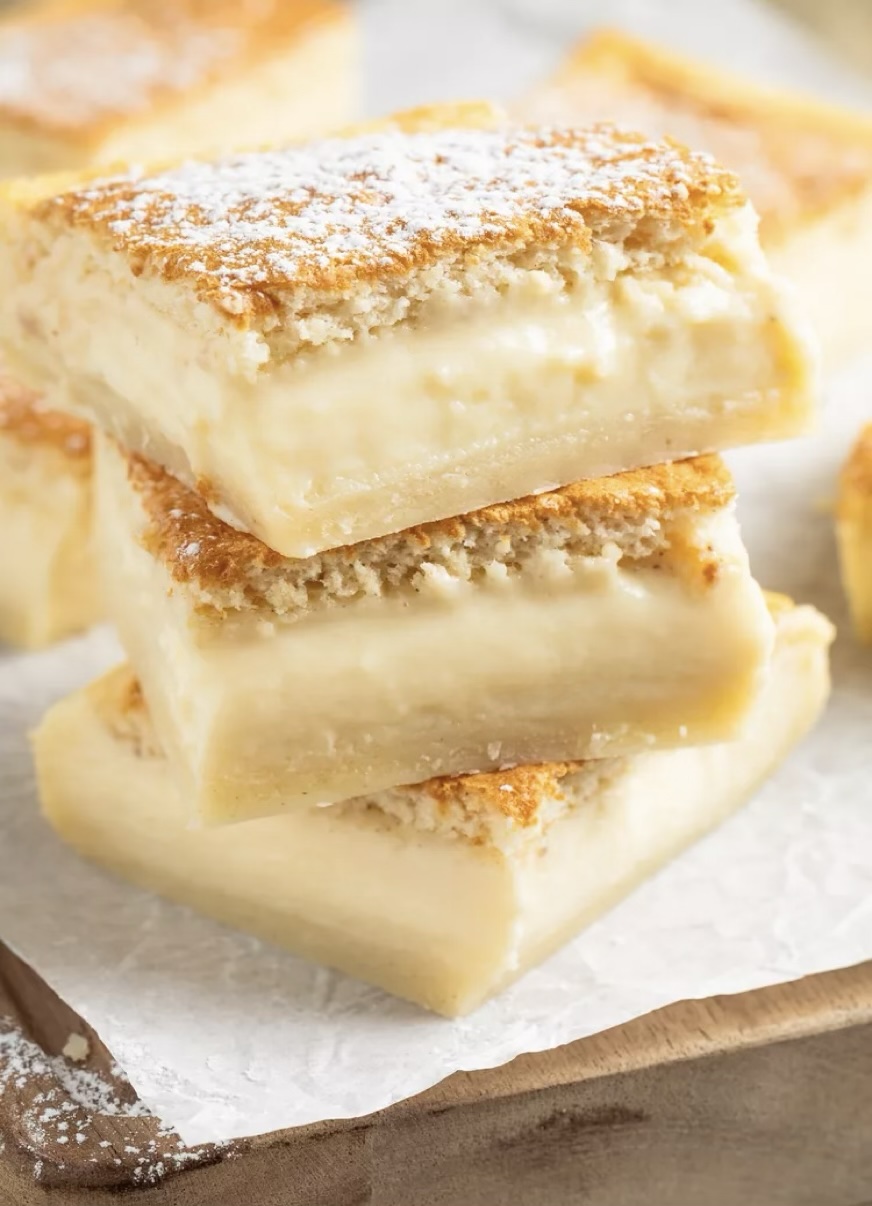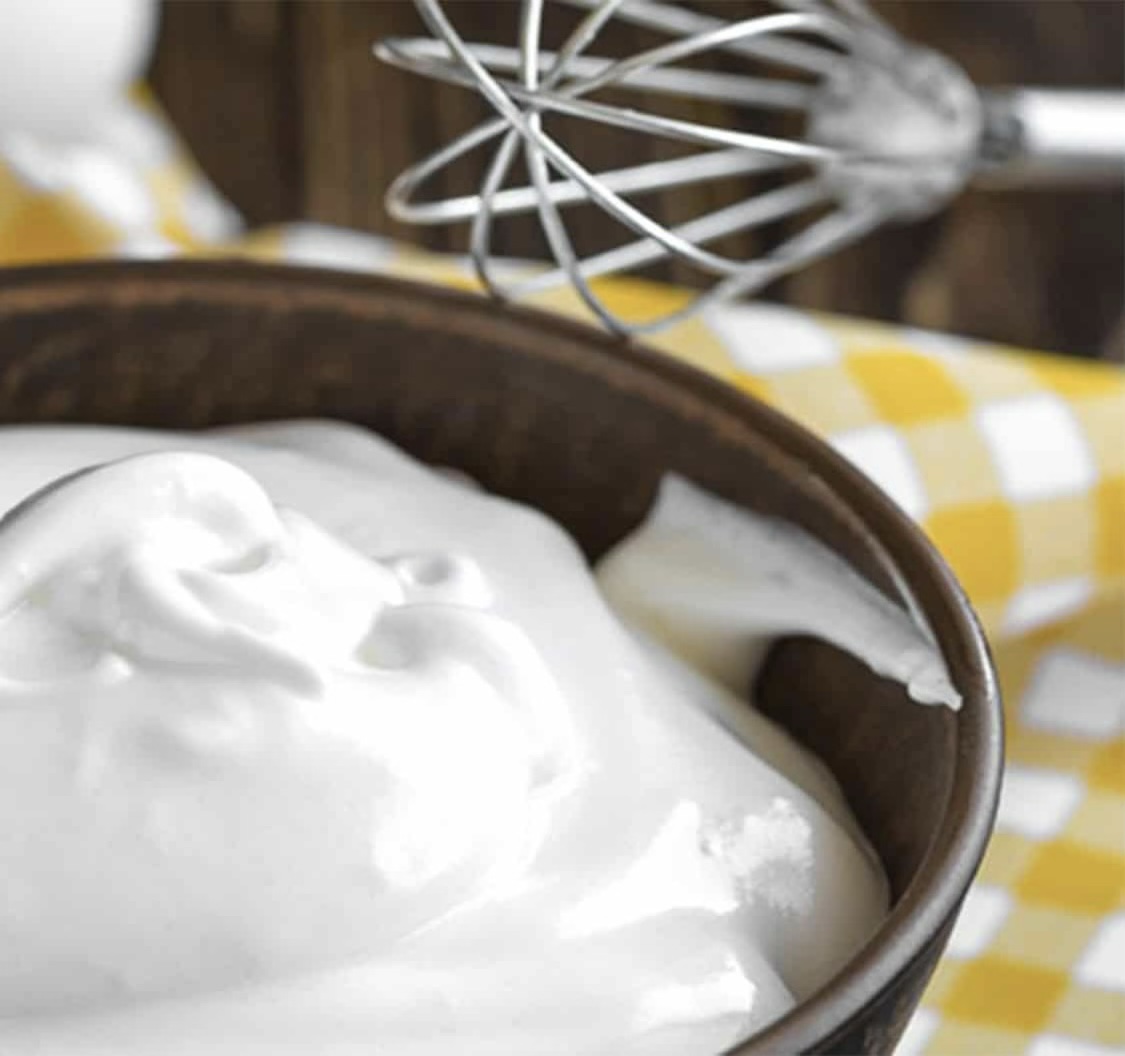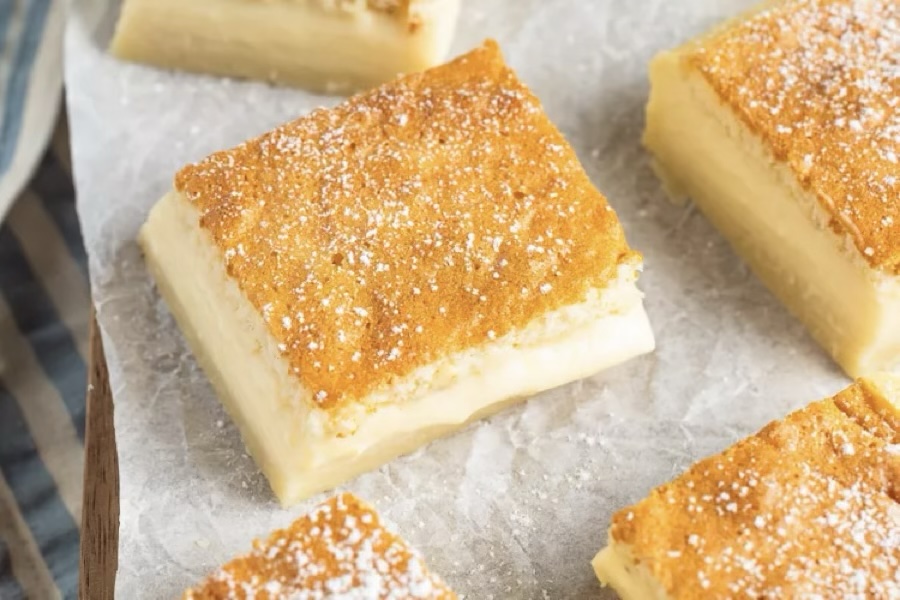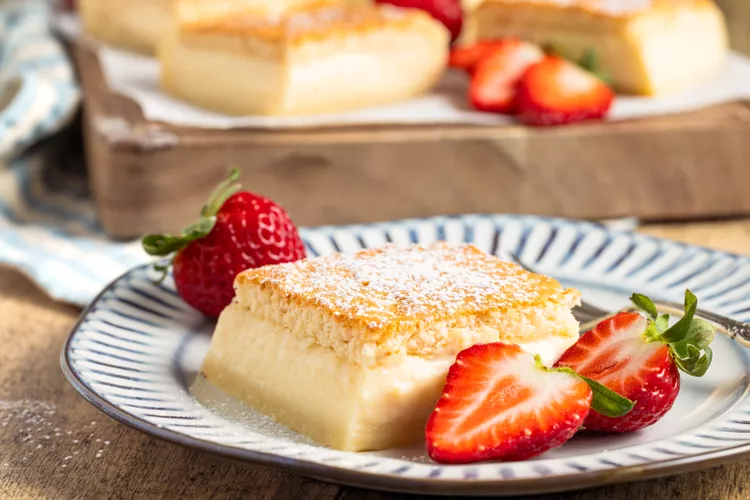For Your Dessertsy Delight: “Magic” Cake!
It’s a classic French dessert. It’s starts as a very soupy batter (similar to that of crepes, clafoutis, or far Breton). It’s called “Magic” Cake. When you think about it, though, isn’t all baking in essence, some sort of magic?
Anyway, this aptly named “magic” cake transforms one batter into a 3-in-1 layered dessert with a thick and fudgy bottom layer, a creamy custard center, and a fluffy layer of sponge cake on top. The magic all happens in the oven—no special ingredients or equipment required.

The range of textures in this dessert is amazing, especially without the work of making a crust, a custard, and a cake separately. The recipe calls for a short list of pantry staples, plus it’s easy to customize with different flavors. For instance, if you dappled the batter with some cherries or fresh berries before baking, it’d be deliciously similar to the above-mentioned clafoutis.
I found this lovely and unique recipe on www.simplyrecipes.com and feel like I hit the jackpot. The Simply Recipes food editor, Mark Beahm, explained the science around it: “The low oven temperature delays when the cake’s structure sets. As the batter slowly warms in the oven, the starch sinks to the bottom, and air bubbles from the egg whites rise to the top. This results in a dense layer on the bottom, a custardy center, and an airy cake on top.”
He also shared a few tips for successfully achieving its delicious layers:
The order of operations is important for achieving the distinct layers in this cake. If any yolk gets into the egg whites, they won't whip properly. Whip the egg whites first so you don't have to wash the beaters in between steps. The egg whites are added to the batter at the end so they don't deflate and prevent the sponge cake layer from forming.

Add the milk and butter slowly to avoid lumps. Start by adding a splash at a time, mixing it in completely before adding the next splash. Once you get through about half of the milk mixture, you’ll know it's safe to add the rest all at once without the batter clumping.
Don’t over-mix when adding the egg whites. There should still be a layer of foam floating on the top of the batter, which will bake into the spongey top layer of the cake.
Cool the cake completely before slicing to give the custard a chance to set. This is a cake that tastes best when fridge-cold, so once it's close to room temperature, chill it for about an hour before slicing (which will allow for cleaner slices).

And because of its simple vanilla base, it’s easy to change its flavor. Consider these ideas:
CHOCOLATE. Whisk 1/3 cup of cocoa powder into the warm milk and butter until dissolved and no lumps remain. Reduce the flour to 1/2 cup. For a more complex chocolate flavor, add 1 teaspoon of instant espresso powder.
NUTELLA. Mix 1/3 cup Nutella in the egg yolk mixture before adding the flour.
CITRUS. Stir in the zest from 1 lemon or 1 orange.
COFFEE. Dissolve some instant espresso powder in the warm milk and butter mixture. Use 2 to 3 teaspoons, depending on how strong you’d like the coffee flavor.
And now for your dessertsy delight, here is Mark’s incredible recipe. Give this a try and see if like me, you can’t thank him enough!
Magic Cake

2 cups (480ml) whole milk
1/2 cup (113g) unsalted butter diced into tablespoon-sized pieces
4 large eggs separated
2/3 cup (135g) sugar
2 teaspoons vanilla extract
1/4 teaspoon kosher salt
1/8 teaspoon ground nutmeg (optional)
3/4 cup (90g) all-purpose flour
powdered sugar for dusting, optional
Directions:
1. Preheat the oven to 325∞F.
2. Grease an 8-inch square pan with butter or cooking spray. Line the pan with a layer of parchment paper covering the bottom and up 2 sides with a slight overhang. Lightly grease the parchment paper.
3. Heat the milk and butter: In a small saucepan, heat the milk and butter on low heat just until the butter melts. Donít let the milk come to a boil or simmer. It should be warm but not scalding hot, 105 to 115∞F. Set aside.
4. Meanwhile, beat the egg whites: In a large bowl using a hand mixer, beat the egg whites on medium-high speed until they form stiff peaks, about 4 minutes. When you lift the beaters out of the bowl, the whipped egg whites should stand up at a point and hold that point.
5. Start the batter: In another large bowl, beat the egg yolks, sugar, vanilla extract, salt, and nutmeg (if using) on high speed until the mixture is pale and creamy, about 2 minutes.
6. Add the flour to the egg yolk mixture and beat on low speed until combined. It may seem like there is too much flour, but the batter will soon be thinned out.
7. Add the warm milk and egg whites: Continue mixing on low speed, or switch to a whisk, and pour in the warm milk and butter a splash at a time. Once you've incorporated about half of the milk mixture, you can pour in the rest, and whisk to combine. The batter will be thin and smooth, like crepe batter.
8. Add the beaten egg whites and use the whisk to gently mix until there are no large lumps of egg whites. Donít overmixóthere should still be a layer of foam on top of the batter.
9. Bake: Pour the batter into the prepared pan. Bake until the top is golden brown, the cake has begun to pull away from the sides of the pan, and the center has a slight jiggle when the pan is gently shaken, about 50 minutes.
2. Grease an 8-inch square pan with butter or cooking spray. Line the pan with a layer of parchment paper covering the bottom and up 2 sides with a slight overhang. Lightly grease the parchment paper.
3. Heat the milk and butter: In a small saucepan, heat the milk and butter on low heat just until the butter melts. Donít let the milk come to a boil or simmer. It should be warm but not scalding hot, 105 to 115∞F. Set aside.
4. Meanwhile, beat the egg whites: In a large bowl using a hand mixer, beat the egg whites on medium-high speed until they form stiff peaks, about 4 minutes. When you lift the beaters out of the bowl, the whipped egg whites should stand up at a point and hold that point.
5. Start the batter: In another large bowl, beat the egg yolks, sugar, vanilla extract, salt, and nutmeg (if using) on high speed until the mixture is pale and creamy, about 2 minutes.
6. Add the flour to the egg yolk mixture and beat on low speed until combined. It may seem like there is too much flour, but the batter will soon be thinned out.
7. Add the warm milk and egg whites: Continue mixing on low speed, or switch to a whisk, and pour in the warm milk and butter a splash at a time. Once you've incorporated about half of the milk mixture, you can pour in the rest, and whisk to combine. The batter will be thin and smooth, like crepe batter.
8. Add the beaten egg whites and use the whisk to gently mix until there are no large lumps of egg whites. Donít overmixóthere should still be a layer of foam on top of the batter.
9. Bake: Pour the batter into the prepared pan. Bake until the top is golden brown, the cake has begun to pull away from the sides of the pan, and the center has a slight jiggle when the pan is gently shaken, about 50 minutes.
Recipe formatted with the Cook'n Recipe Software from DVO Enterprises.
 Alice Osborne
Alice Osborne
DVO Newsletter Contributor since 2006
Email the author! alice@dvo.com
Sources:
- www.healthynibblesandbits.com
- www.kikkoman.com
- www.iherb.com
- www.thegardengrazer.com
